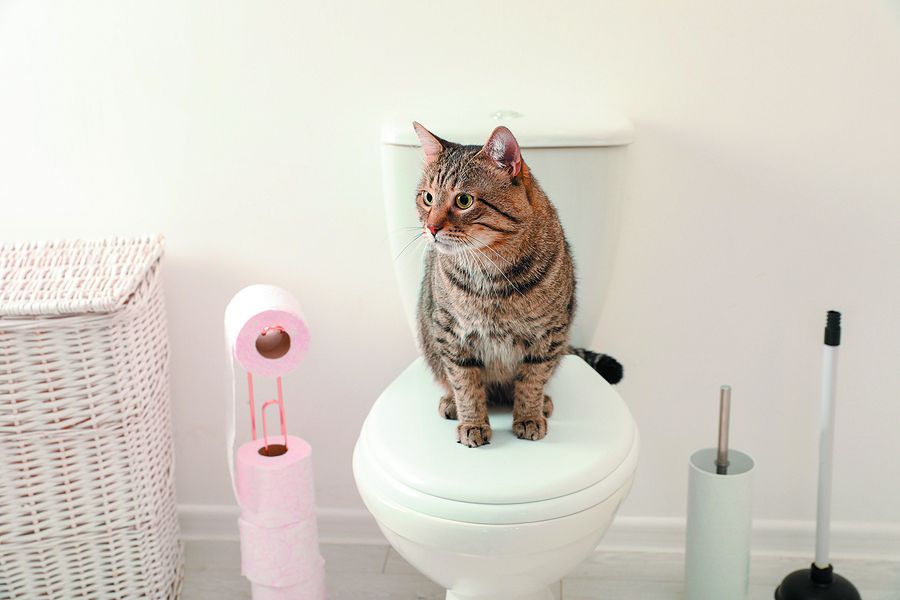Were you looking for help around How to Dispose of Cat Poop and Litter Without Plastic Bags?

Intro
As feline owners, it's vital to be mindful of just how we dispose of our feline buddies' waste. While it might appear hassle-free to flush pet cat poop down the bathroom, this practice can have harmful repercussions for both the atmosphere and human health.
Alternatives to Flushing
Thankfully, there are more secure and more accountable means to take care of pet cat poop. Consider the following alternatives:
1. Scoop and Dispose in Trash
The most usual technique of throwing away cat poop is to scoop it into an eco-friendly bag and toss it in the garbage. Make sure to use a specialized litter scoop and take care of the waste quickly.
2. Use Biodegradable Litter
Choose eco-friendly cat trash made from products such as corn or wheat. These litters are environmentally friendly and can be securely gotten rid of in the garbage.
3. Hide in the Yard
If you have a backyard, consider burying feline waste in an assigned location away from vegetable gardens and water sources. Make sure to dig deep sufficient to avoid contamination of groundwater.
4. Install a Pet Waste Disposal System
Buy a pet waste disposal system specifically created for feline waste. These systems use enzymes to break down the waste, decreasing smell and ecological impact.
Health Risks
Along with environmental concerns, purging feline waste can likewise pose wellness dangers to human beings. Feline feces may have Toxoplasma gondii, a parasite that can create toxoplasmosis-- a possibly extreme disease, specifically for pregnant females and people with weakened immune systems.
Environmental Impact
Flushing cat poop presents hazardous microorganisms and parasites into the water system, posing a significant danger to water environments. These contaminants can adversely affect aquatic life and compromise water top quality.
Verdict
Responsible animal possession prolongs past providing food and sanctuary-- it likewise includes appropriate waste monitoring. By avoiding flushing feline poop down the bathroom and choosing alternative disposal techniques, we can lessen our ecological impact and protect human wellness.
Why Can’t I Flush Cat Poop?
It Spreads a Parasite
Cats are frequently infected with a parasite called toxoplasma gondii. The parasite causes an infection called toxoplasmosis. It is usually harmless to cats. The parasite only uses cat poop as a host for its eggs. Otherwise, the cat’s immune system usually keeps the infection at low enough levels to maintain its own health. But it does not stop the develop of eggs. These eggs are tiny and surprisingly tough. They may survive for a year before they begin to grow. But that’s the problem.
Our wastewater system is not designed to deal with toxoplasmosis eggs. Instead, most eggs will flush from your toilet into sewers and wastewater management plants. After the sewage is treated for many other harmful things in it, it is typically released into local rivers, lakes, or oceans. Here, the toxoplasmosis eggs can find new hosts, including starfish, crabs, otters, and many other wildlife. For many, this is a significant risk to their health. Toxoplasmosis can also end up infecting water sources that are important for agriculture, which means our deer, pigs, and sheep can get infected too.
Is There Risk to Humans?
There can be a risk to human life from flushing cat poop down the toilet. If you do so, the parasites from your cat’s poop can end up in shellfish, game animals, or livestock. If this meat is then served raw or undercooked, the people who eat it can get sick.
In fact, according to the CDC, 40 million people in the United States are infected with toxoplasma gondii. They get it from exposure to infected seafood, or from some kind of cat poop contamination, like drinking from a stream that is contaminated or touching anything that has come into contact with cat poop. That includes just cleaning a cat litter box.
Most people who get infected with these parasites will not develop any symptoms. However, for pregnant women or for those with compromised immune systems, the parasite can cause severe health problems.
How to Handle Cat Poop
The best way to handle cat poop is actually to clean the box more often. The eggs that the parasite sheds will not become active until one to five days after the cat poops. That means that if you clean daily, you’re much less likely to come into direct contact with infectious eggs.
That said, always dispose of cat poop in the garbage and not down the toilet. Wash your hands before and after you clean the litter box, and bring the bag of poop right outside to your garbage bins.
https://trenchlesssolutionsusa.com/why-cant-i-flush-cat-poop/

Do you appreciate reading about Can You Flush Cat Poop Down The Toilet?? Post a review below. We will be interested to hear your thoughts about this content. In hopes that you visit us again later on. Are you aware of another individual who is serious about How to Dispose of Cat Poop and Litter Without Plastic Bags? Feel free to share it. Thank you for going through it.
Get Offer